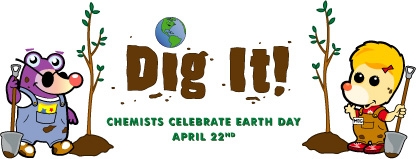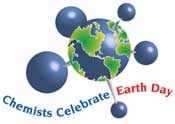Online Resources
Key: E = Elementary (K–5), I = Intermediate (6–8), HS = High School (9–12), C = College, G = General Public
Photosynthesis
- ASU Center for the Study of Early Events in Photosynthesis — Educational Resources. Provided by Arizona State University. (E, I, HS, C, G)
- Includes information about what photosynthesis is, why photosynthesis is studied, and photosynthesis and the web.
- BBC — Gardening — Photosynthesis. Provided by British Broadcasting Corp. (I, HS, G)
- Most plants are really lucky — they don’t have to go shopping for their food or spend time cooking it. They just sit waiting for sunshine and then make their food themselves.
- Chemistry for Biologists — Photosynthesis. Provided by the Royal Society of Chemistry. (HS, C)
- Summarizes the stages of photosynthesis and factors affecting the rate of photosynthesis.
- Plants: Photosynthesis for Elementary School. Provided by Univ. of Missouri. (E)
- Focusing on photosynthesis and plant growth, there are animations that demonstrate the process of photosynthesis, and how plants grow as well as activities, games, and songs.
- Photosynthesis. Provided by Estrella Mountain Community College, A Maricopa Community College, Tempe, Arizona. (HS, C)
- Multimedia photosynthesis teaching modules (text and images). Includes stages of photosynthesis.
Nitrogen Cycle
- The Nitrogen Cycle: Nitrogen Transformations in Soil, Water, and Air. Provided by Goddard Space Flight Center, NASA. (I, HS, C, G)
- Part of the nitrogen fate transformation game on the Soil Science Education web site. It contains a brief explanation, a nice image, and glossary of terms.
- The Nitrogen Cycle: Of Microbes and Men. Provided by Vision Learning. (HS, C)
- This learning module from a site supported by the National Science Foundation for high school and college students provides an overview of the nitrogen cycle and the chemical changes that govern it.
- Nitrogen in the Earth System. Provided by the National Center for Atmospheric Research and the University Corporation for Atmospheric Research. (I, HS, C, G)
- Nitrogen is essential to all living systems, which makes the nitrogen cycle one of Earth’s most important nutrient cycles. Learn about the nitrogen cycle, human activities and the nitrogen cycle, and harmful effects of nitrogen deposition.
Soil Erosion
- GLOBE — Teacher’s Guide — Soil Chapter. (E, I, HS)
- GLOBE (Global Learning and Observations to Benefit the Environment) is a worldwide hands-on, primary and secondary school-based education and science program. This chapter includes a broad array of protocols and activities to help students learn about soils.
- NRSC — Soils. Provided by U.S. Department of Agriculture, Natural Resources Conservation Service. (E, I, HS, C, G)
- “Soils” is part of the National Cooperative Soil Survey, an effort of Federal and State agencies, universities, and professional societies to deliver scientifically based soil information. Has extensive set of links for teachers and students.
- S.K. Worm Teaches Soils. (E)
- It’s a dirty job but someone has to do it — S.K. Worm answers students’ questions about soil. Even their teachers can’t wiggle their way out of this one! Slither your way through these soil questions and earn a special diploma.
- Smithsonian Soils Exhibit. Provided by Smithsonian Institution. (G)
- The Soil Science Society of America is working with the Smithsonian Institution’s National Museum of Natural History in Washington, DC, to plan a soils exhibit as part of their Forces of Change Program. The exhibit will include a display of state soil monoliths and an educational, interactive section to help the museum’s visitors understand how soil is intricately linked to the health of humanity, the environment and the planet.
- Soil Science Education Page. Provided by Goddard Space Flight Center, National Atmospheric Space Administration. (E, I, HS, C, G)
- This site answers many of the frequently asked questions about soil. It includes tutorials, soil experiment demonstrations, and ideas for science fair projects.
- Teaching Geoscience with Visualizations: Using Images, Animations, and Models Effectively — Soil Erosion. Provided by Carleton College and Central Michigan Univ. (C, G)
- Provides a collection of audio, visual, and informational resources about soil erosion. It includes information about the Dust Bowl during the 1930s plus links to galleries of soil erosion images.
- Visible Earth (NASA) — Land Surface. Provided by NASA. (G)
- This website contains a searchable directory of images, visualizations, and animations of the Earth. This section contains images pertaining to surface processes, including erosion, sedimentation, land temperature, land use, soils, and topography.
Organic Farming
- All Organic Links. (G)
- AllOrganicLinks.com is a not-for-profit web site created by Foerstel Design, a graphic design firm committed to the organic industry and its community. The sole purpose of AllOrganicLinks.com is to connect users with businesses that support organics and a healthier planet.
- BBC — Gardening — Organic Gardening. Provided by the British Broadcasting Corporation. (G)
- Organic gardens can be attractive and productive — and it’s simpler than you think. Follow our guides to creating and maintaining an organic garden.
- The Organic Center. (G)
- To generate credible, peer reviewed scientific information and communicate the verifiable benefits of organic farming and products to society.
- Organic Trade Association. (G)
- Organic Trade Association (OTA) is a membership-based business association that focuses on the organic business community in North America. OTA’s mission is to promote and protect the growth of organic trade to benefit the environment, farmers, the public and the economy.
Other Earth Day Web Sites
- EarthDay.gov.
- EarthDay Network. (E, I, HS, C, G)
- Earth Day Network is an alliance of 5,000 groups in 184 countries working to promote a healthy environment and a peaceful, just, sustainable world.

Copyright © 2006 American Chemical Society

